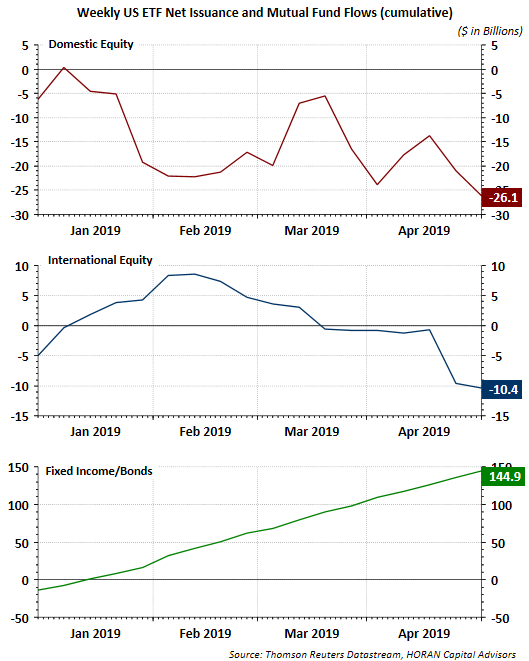Investors Increasingly Bullish On Stocks, But Outflows Continue From Equity Funds
This past week saw the AAII individual investor bullish sentiment move higher to 43.1%. This pushed the bullish reading above its average reading of 38.5% but still below the overly bullish +1 standard deviation level of 48.3%. The bullishness reading has been somewhat volatile of late resulting in the 8-period moving average remaining below 40% at 36.9%.

This recent trend higher in investor bullishness has not lead to increasing inflows into equity mutual funds and ETFs. Lipper reported a third straight week of equity outflows that reached -$12.7 billion with much of this coming out of equity ETFs, i.e., -$10.4 billion. As I have noted in earlier posts, equity flows have been negative on a cumulative basis this year. The Investment Company Institute (ICI) reports flow data with a one week lag and the below charts shows inflows continue to overwhelmingly favor bond type investments for the week ending May 1, 2019.

Lastly, the equity put/call ratio is moving higher to .80 as of last week's market close. This is the highest level for the put/call ratio since it was over 1.0 on December 21, 2018. P/C readings above 1.0 represent an extreme bearish reading and the equity market has a tendency to reverse itself when the P/C ratio is above 1.0.

It seems investors remain conflicted on the direction of the equity market. In terms of investor sentiment, survey respondents are increasingly indicating they are bullish on stocks over the next six months, yet equity flows into mutual funds and ETFs have remained negative this year. Additionally, the increase in the equity P/C ratio indicates further defensive posturing by investors. This mixed sentiment data likely leads to elevated equity market volatility in the near term.



